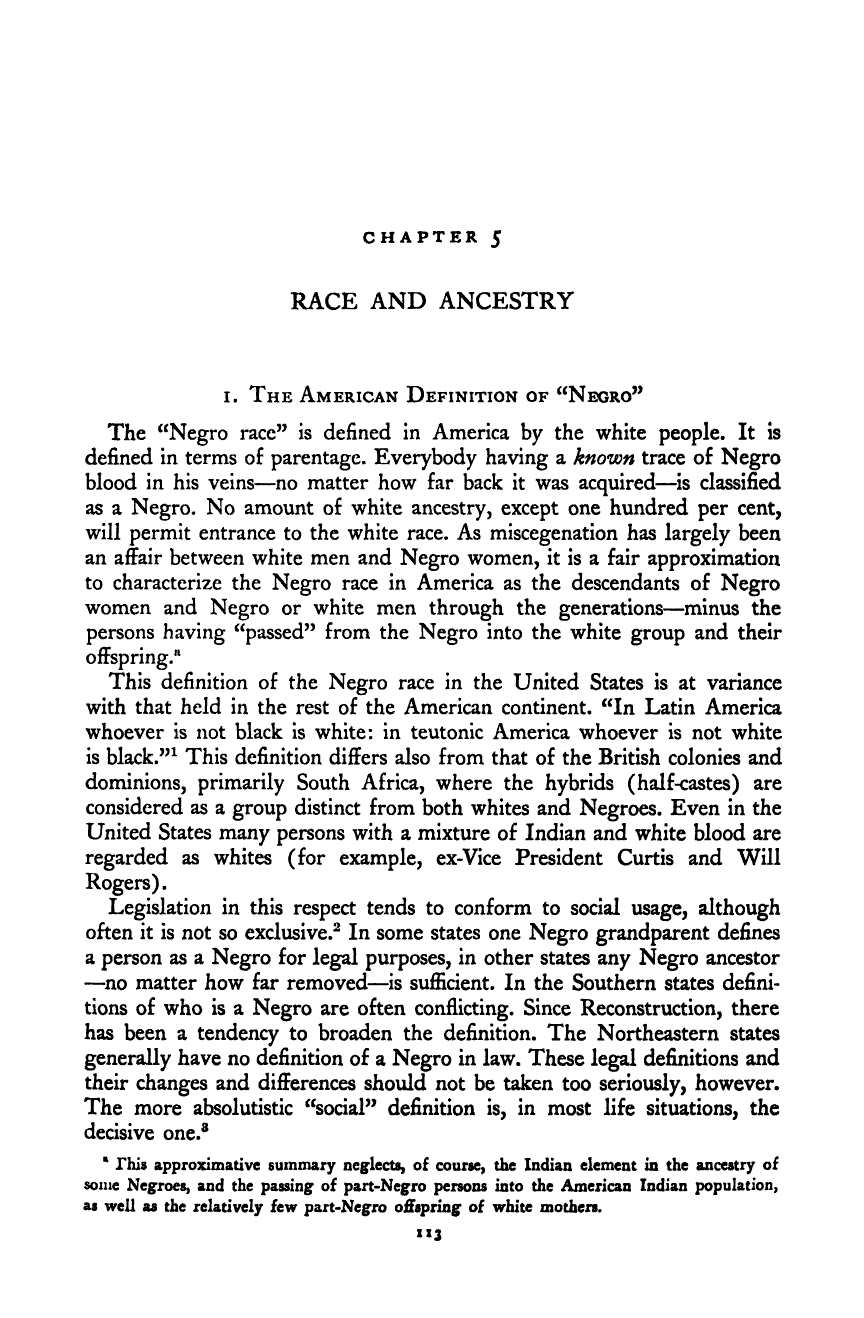Note: Gunnar Myrdal died in 1987, less than 70 years ago. Therefore, this work is protected by copyright, restricting your legal rights to reproduce it. However, you are welcome to view it on screen, as you do now. Read more about copyright.
Full resolution (TIFF) - On this page / på denna sida - II. Race - 5. Race and Ancestry - 1. The American Definition of “Negro”

<< prev. page << föreg. sida << >> nästa sida >> next page >>
Below is the raw OCR text
from the above scanned image.
Do you see an error? Proofread the page now!
Här nedan syns maskintolkade texten från faksimilbilden ovan.
Ser du något fel? Korrekturläs sidan nu!
This page has never been proofread. / Denna sida har aldrig korrekturlästs.
CHAPTER 5
RACE AND ANCESTRY
I. The American Definition of ^^Negro’’
The “Negro race” is defined in America by the white people. It is
defined in terms of parentage. Everybody having a known trace of Negro
blood in his veins—no matter how far back it was acquired—is classified
as a Negro. No amount of white ancestry, except one hundred per cent,
will permit entrance to the white race. As miscegenation has largely been
an affair between white men and Negro women, it is a fair approximation
to characterize the Negro race in America as the descendants of Negro
women and Negro or white men through the generations—minus the
persons having “passed” from the Negro into the white group and their
offspring."
This definition of the Negro race in the United States is at variance
with that held in the rest of the American continent. “In Latin America
whoever is not black is white: in teutonic America whoever is not white
is black.”^ This definition differs also from that of the British colonies and
dominions, primarily South Africa, where the hybrids (half-castes) are
considered as a group distinct from both whites and Negroes. Even in the
United States many persons with a mixture of Indian and white blood are
regarded as whites (for example, ex-Vice President Curtis and Will
Rogers).
Legislation in this respect tends to conform to social usage, although
often it is not so exclusive.^ In some states one Negro grandparent defines
a person as a Negro for legal purposes, in other states any Negro ancestor
—^no matter how far removed—is sufficient. In the Southern states defini-
tions of who is a Negro are often conflicting. Since Reconstruction, there
has been a tendency to broaden the definition. The Northeastern states
generally have no definition of a Negro in law. These legal definitions and
their changes and differences should not be taken too seriously, however.
The more absolutistic “social” definition is, in most life situations, the
decisive one.®
* This approximative summary neglects, of course, the Indian element in the ancestry of
some Negroes, and the passing of part-Negro persons into the American Indian population,
as well as the relatively few part-Negro offspring of white mothers.
*»3
<< prev. page << föreg. sida << >> nästa sida >> next page >>